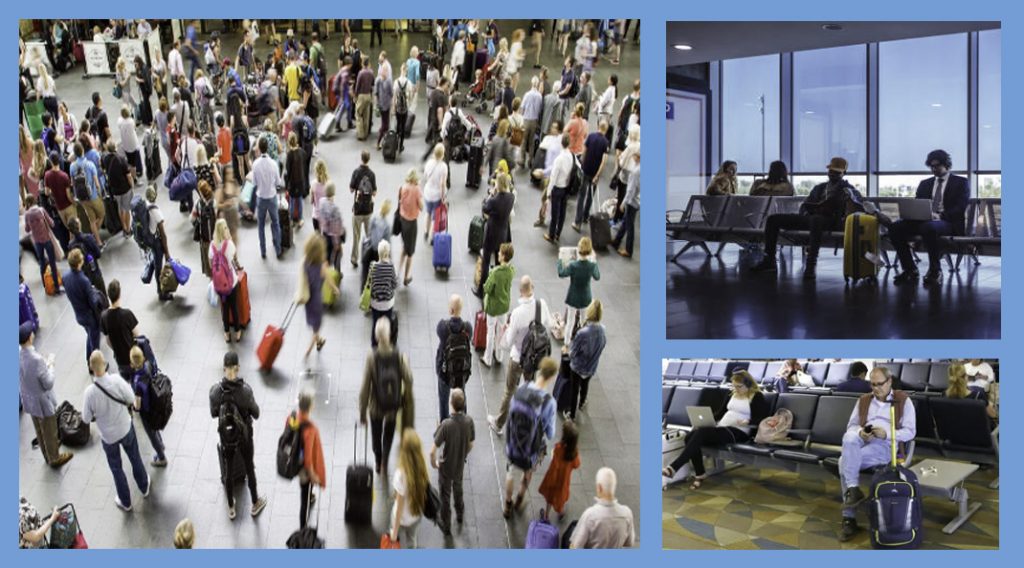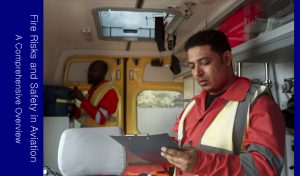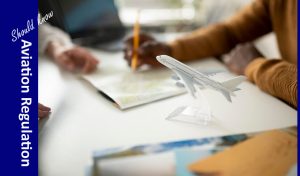Introduction
The airport is a Public place. Airports are bustling crossroads where travelers from all walks of life converge with their hopes, dreams, and itineraries. They’re also places where the concept of personal space often feels like an elusive luxury. In the confined quarters of airport waiting areas, respecting personal space becomes paramount to ensure a comfortable and harmonious atmosphere for everyone. Let’s explore The Unwritten Rules of Airport Waiting Areas.
In this comprehensive guide, we’ll explore the unwritten rules, social norms, and common-sense practices that help travelers navigate airport waiting areas with grace and courtesy. Whether you’re a frequent flyer or an occasional traveler, these guidelines will not only make your journey more enjoyable but also contribute to the collective well-being of fellow passengers.

Section 1: The Importance of Personal Space
Before delving into the unwritten rules, let’s grasp the significance of personal space in an airport context. Personal space refers to an individual’s “bubble” or the physical and psychological comfort zone they need to feel relaxed and at ease. In an airport waiting area, which is often characterized by crowded seating, constant announcements, and the anticipation of flights, personal space plays a pivotal role in the passenger experience.
1.1 Comfort and Relaxation: Passengers endure long wait times before boarding. Adequate personal space allows them to unwind, read, work, or even take a quick nap without feeling cramped or overwhelmed.
1.2 Privacy: Passengers value their privacy, especially when they’re handling sensitive information or personal tasks on their devices. Maintaining personal space can help ensure privacy and prevent unwanted eavesdropping.
1.3 Reduced Stress: Overcrowding and encroachment on personal space can lead to stress and discomfort. Respecting personal space helps create a more serene and stress-free environment.
1.4 Cultural Sensitivity: Different cultures have distinct norms regarding personal space. Respecting these differences is not only courteous but also prevents cultural misunderstandings and conflicts.
Section 2: The Unwritten Rules of Airport Waiting Areas
Now, let’s explore the unwritten rules that govern personal space in airport waiting areas.
2.1 Leaving an Empty Seat: Whenever possible, leave an empty seat between yourself and other travelers. This small gesture provides extra space and comfort. If the area is not crowded, this practice is particularly appreciated.
2.2 Armrest Etiquette: The armrests in airport seats can be a source of tension. When sitting next to others, share the armrests rather than dominating them. Being mindful of your neighbors’ comfort is key.
2.3 Proper Bag Placement: Keep your bags and personal items well-organized. Place them under your seat or on your lap, rather than occupying empty seats with your belongings. Be especially considerate when your bag takes up additional space.
2.4 Avoiding Loud Conversations: While it’s acceptable to chat with travel companions or make phone calls, do so at a reasonable volume. Nobody wants to be disturbed by loud, personal conversations in a crowded waiting area.
2.5 Use of Headphones: If you plan to watch videos, listen to music, or enjoy a podcast, use headphones. This simple act ensures that you don’t impose your entertainment choices on fellow travelers.
2.6 Respect Queue Lines: Whether it’s a line for boarding, security, or other services, maintain your position in a courteous and orderly manner. Avoid pushing or cutting in line.
2.7 Maintaining Personal Boundaries: Everybody’s personal space preferences are different. However, as a general rule, try to leave a few feet of space between yourself and others, especially when open seats are available.
2.8 Body Language Awareness: Be conscious of your posture and body language. Avoid leaning or sprawling into others’ space. Good posture and situational awareness show respect for your surroundings.
2.9 Watch Your Luggage: Be attentive to your belongings. Don’t leave them unattended or sprawled out in a way that obstructs walkways or seating areas.
2.10 Patience and Politeness: Patience is a virtue in airport waiting areas. Avoid pushing, shoving, or displaying visible frustration, particularly during delays or crowded conditions.
2.11 Cultural Sensitivity: Be aware of the cultural norms regarding personal space in different parts of the world. Adapt your behavior to respect these norms when traveling internationally.
Section 3: Guidelines for Specific Scenarios
Respecting personal space isn’t limited to sitting in the waiting area. Various scenarios call for specific guidelines:
3.1 Boarding and Deplaning: When boarding or deplaning, be mindful of others’ personal space. Avoid bumping into them with your luggage or blocking pathways. Wait your turn patiently.
3.2 Security Checkpoints: While waiting in line at security checkpoints, maintain a comfortable distance from the person in front of you. This ensures that you don’t infringe on their personal space.
3.3 Offering Assistance: If you notice someone struggling with their luggage or needing help, offering assistance can be a kind and considerate gesture that respects their personal space.
3.4 Noise Control: If you’re working or participating in a video conference call, consider moving to a designated quiet area to minimize the impact on others. Noise-cancelling headphones can also be helpful.
3.5 Children and Families: When traveling with children, ensure they respect the personal space of others. This includes controlling noise and ensuring they don’t invade others’ space.
Section 4: Common Courtesies in Airport Waiting Areas
Beyond personal space, several common courtesies make the airport experience more pleasant for all passengers.
4.1 Greeting Airport Staff: A simple “hello” and a smile go a long way in establishing a positive atmosphere. Treat airport staff with courtesy and appreciation for their hard work.
4.2 Security and Safety: Follow security procedures diligently. Be patient and cooperative during security checks, as this contributes to the safety and well-being of all travelers.
4.3 Hygiene: Maintain good hygiene in close quarters. Use hand sanitizer, cover your mouth when coughing or sneezing, and dispose of trash properly.
4.4 Offering Help: If you see someone in need—whether it’s with luggage, directions, or a friendly conversation—don’t hesitate to offer assistance. Such acts of kindness enhance the overall experience.
4.5 Disposing of Trash: Don’t leave your trash behind. Airport staff work diligently to keep waiting areas clean; do your part by using designated bins.
Section 5: Adapting to Cultural Differences
Cultural norms regarding personal space vary widely across the globe. In some cultures, people naturally stand closer to one another, while in others, maintaining a significant physical distance is the norm. When traveling internationally, being sensitive to these differences is crucial for respectful interactions.
5.1 Research Before Travel: Before embarking on international travel, take the time to research the cultural norms of your destination. Understanding local customs regarding personal space can help you adapt your behavior accordingly.
5.2 Observe and Learn: While on your trip, observe how locals interact in public spaces, including airports. Pay attention to cues and adapt your behavior to align with the local culture.
5.3 Respect Personal Space Preferences: When in doubt, err on the side of caution by giving others more personal space. It’s usually better to be perceived as
Remember, the unwritten rules of respecting personal space in airport waiting areas are not only about adhering to common courtesy but also about creating a more harmonious and enjoyable environment for all travelers. These additional tips can help make your airport experience and that of those around you more pleasant and respectful.









